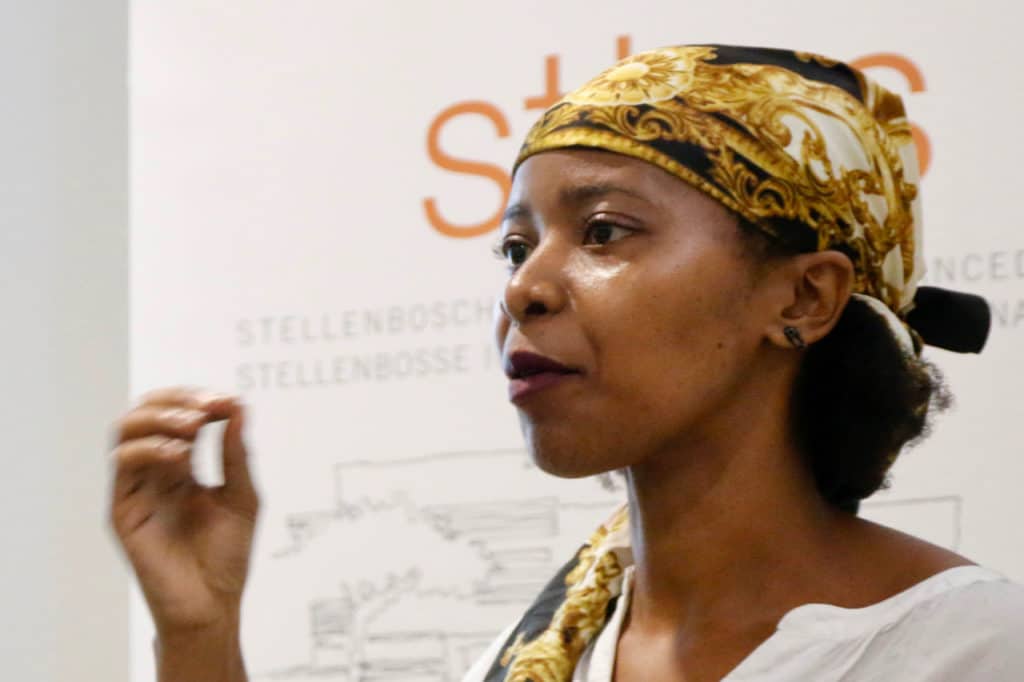“At some point in the early 1960s in apartheid-era South Africa, in the port city of East London, two photographers nearly ‘met’, or perhaps they did. Daniel Morolong and Joseph Denfield were both active in producing photographs for different audiences and purposes in this conjuncture: one set being primarily portraits procured by individuals, the other a recuperated collection from late 19th century glass negatives. And there existed at least a 50-km distance between then, as well as other less quantifiable distances. A potential site of crossings was the sea, marked as it was by detritus and damsels, shipwrecks and seaweed, Victorian modesty as well as bodies on display. What kinds of beaches exist as potential sites of crossings between these two seemingly divergent photographic collections? In what ways does reading these two collections alongside one another become a sojourn to the seaside, challenging the boundaries of intelligibility which scholars of not only photography but also apartheid history, have held onto? These are the kinds of questions that I am thinking through,” said Phindezwa Mnyaka, of the History Department at the University of the Western Cape and STIAS Iso Lomso Visiting Scholar.

“My project engages with these photographic collections in the context of intensified racial segregation and restructuring of the city in accordance with apartheid policies,” she said. “In both collections the East London coastline figures prominently as both setting and subject. Drawing from scholarship that argues for photography as a mode of performing history, and history writing, in turn, as a way of constituting a spectacle, the project aims to generate experimental texts attentive to the discipline of history.”
“As material objects marked by expansiveness and instability of meaning in both form and content, Morolong’s and Denfield’s photographs draw attention to how historical knowledge is produced, rather than found, thus allowing for formal disruptions and novel modes of writing,” she added.
Denfield was a British immigrant. Via The Daily Dispatch newspaper he put out a request for readers to send in photos from the 1870s to 1910 and then undertook the task of cleaning and re-photographing the negatives once received. “He entered the domain of history by donating them to the library in 1967, thus assigning a historical value to the photos.”
Morolong was a photographer, born in East London, who went to school in Zastron in the Free State, and began his photography career in the early 1950s.
“Their stories and work are probably nothing exceptional but historians tend to re-invent the exceptionality of individuals,” said Mnyaka. “Racial divisions probably ensured that these two men never met but I like to think their respective journeys coincided.”
By the late 1960s black locations close to the city had been demolished and moved to the Ciskei Homeland. Beaches would also have been demarcated along racial lines.
“These photos were taken against a background of the uprooting of black people from public spaces – the erasure of their identity,” explained Mnyaka. “They depict communities poised on a knife edge of history.”
She also explained how the coastal imagery is at once both familiar and strange, temporal, unstable and ever changing. “Beaches of the mind. The historical narrative entangles into the seaweed while the tide erases the contours.”
“Such images recall the past but I believe can also assist us in reconfiguring the future as we unpack the ongoing effects of apartheid.”
She also spoke of the differences in available technology between the two collections. Glass negatives were a chemically fluid object. The system was slow initially producing blurred images before clearer images emerged.
“Morolong’s photos were mostly of people who procured the photos themselves – they wanted to be photographed,” she continued. “Whereas Denfield’s collection was related to historical events, the marking of occasions – and, of course, were taken by different photographers which would have shaped the experience. The earlier technology also created more distance from the subject.”
Speaking more generally of studio photography of black people in South Africa from the 1950s and 60s, she said: “They often depicted black people in a positive light. Almost fairy-tale like – an antithesis of what was happening outside. People in a studio could reinvent themselves resulting in photos that appear slightly staged.”
Looking at the links with contemporary East London – Mnyaka pointed out that the beach promenade is still there. “Promenading and the activities around it still takes place – the social patterns are identical – but now with people recording it for social media.”
And what does she hope to do with this work?
Mnyaka explained that the project aims to unpack the multiple ways that photographs can be utilised for formal experimentation and disruption in history writing.
She laughingly referred to herself as “a bad historian”.
“I’m not overly invested in developing a narrative or deconstructing an existing narrative. I’m doing all of these things but not fully committed to any one of these things. I’m trying to occupy a transitional space, unpacking my own curiosity as to how you work with this type of material and how such materials mediate your thinking,” she added.
“We don’t know much about the people in the photos. I do ask myself what I would want from them if I spoke to them today. It’s not an easy question. Their voices and stories are not in the archives. I’m focusing on the aesthetic and wondering about the kinds of questions we could ask.”
She also admitted to experiencing huge joy and some melancholy in viewing the photos. “I’m aware of the possible backstories of the subjects but they are still having fun.”
“As an academic I’m contractually bound to produce knowledge,” she continued. “I’m not sure how many journals will accept this kind of work. It’s fun but I still want to do it ethically, with integrity, sensitivity and humility.”
Michelle Galloway: Part-time media officer at STIAS
Photograph: Christoff Pauw
